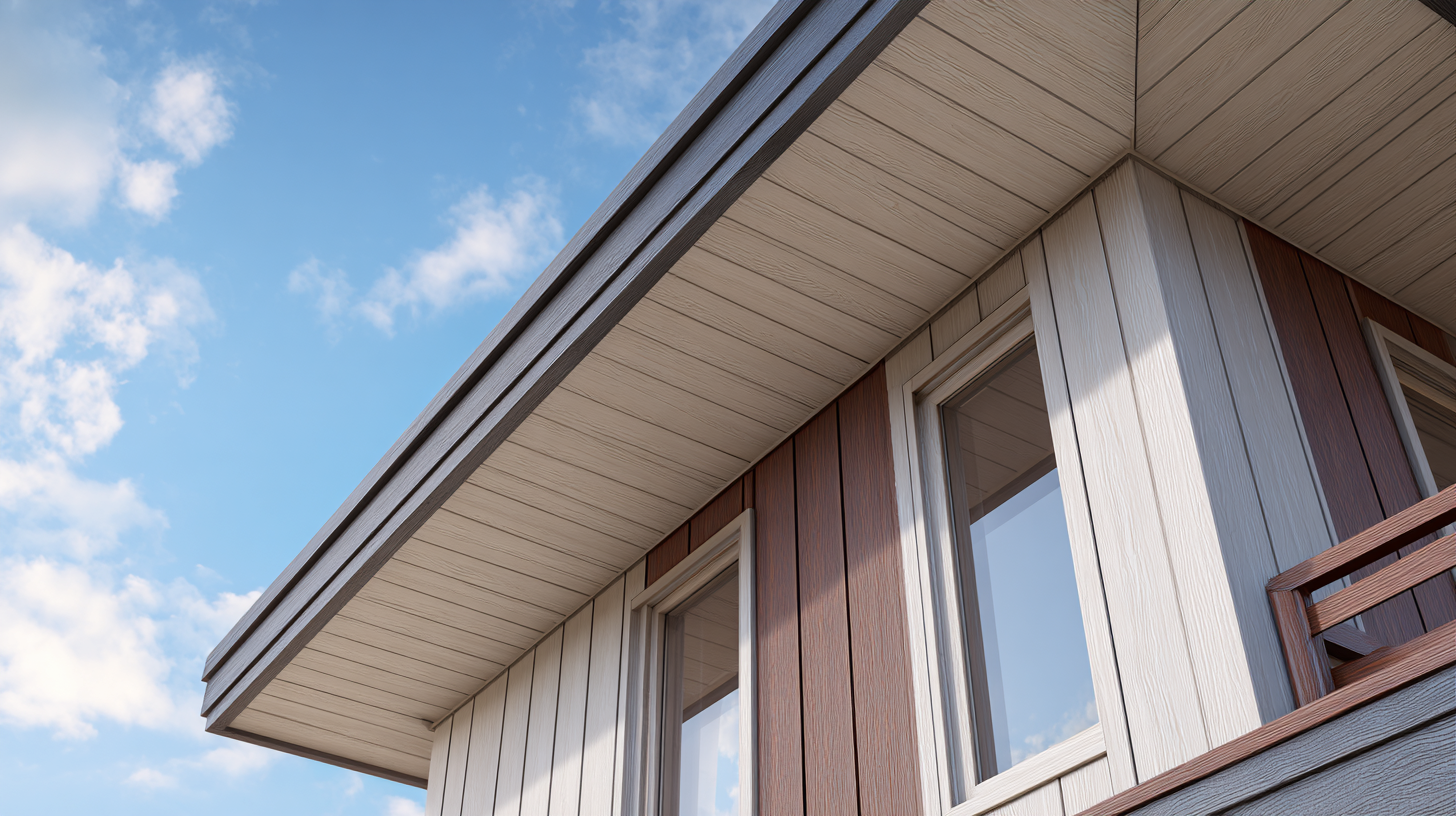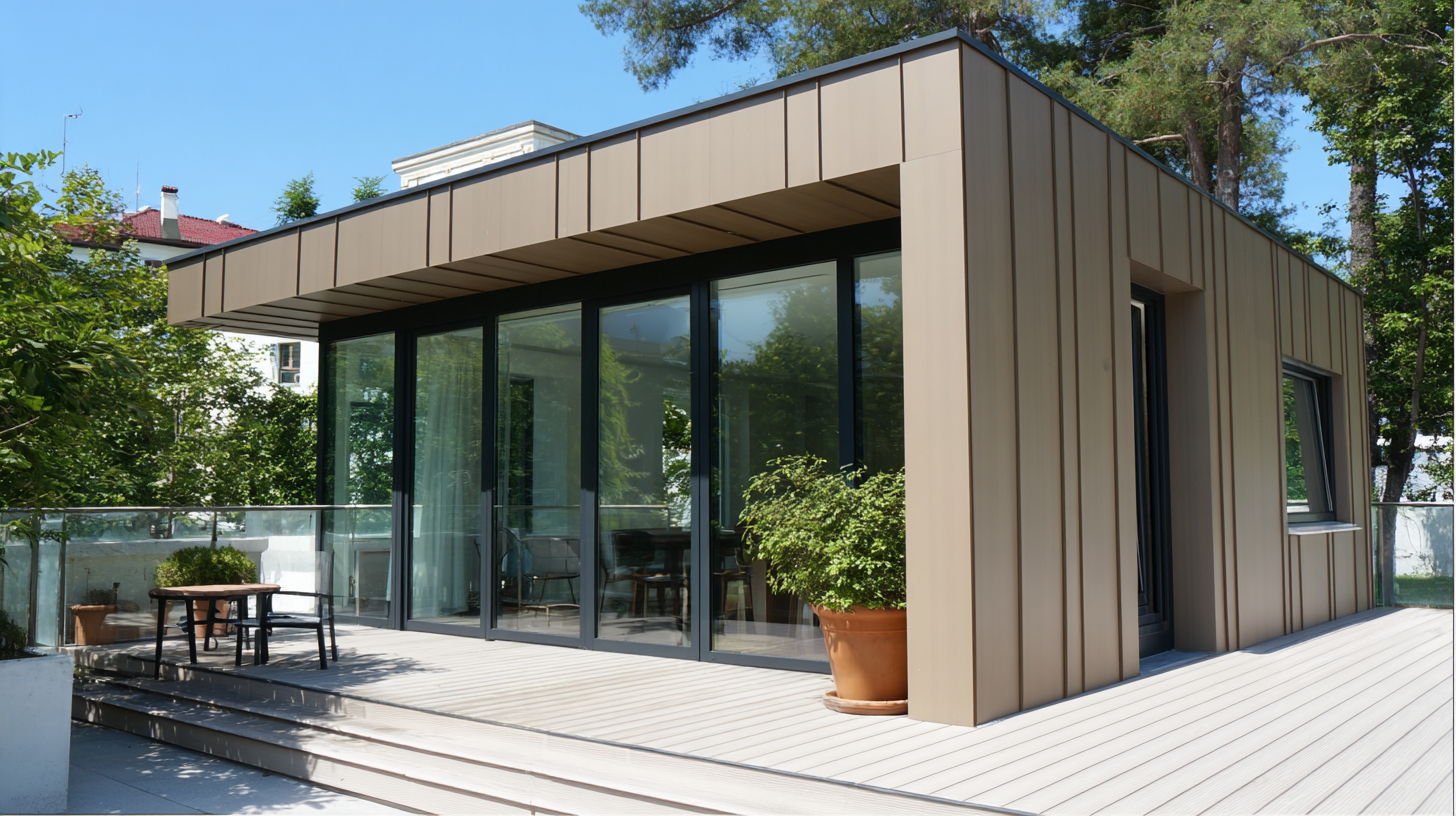Shandong Xiangying New Materials Technology Co., Ltd.
Shandong Xiangying New Materials Technology Co., Ltd.
In recent years, Wpc Cladding has emerged as a revolutionary building material, outperforming traditional options such as wood, vinyl, and aluminum. According to a report by MarketsandMarkets, the global Wpc market is expected to reach $10.5 billion by 2025, driven by its superior durability, low maintenance, and eco-friendly characteristics.

Unlike conventional materials, Wpc Cladding offers enhanced resistance to moisture, rot, and pests, making it an ideal choice for both residential and commercial applications. As we look ahead to 2025, the trends indicate a growing preference for innovative materials like Wpc Cladding, which not only provide aesthetic appeal but also meet the increasing demand for sustainable construction solutions.
Embracing such forward-thinking technologies is essential for the evolution of the building industry as it adapts to changing consumer needs and environmental concerns.
WPC (Wood Plastic Composite) cladding
is rapidly gaining popularity as a superior alternative to traditional wood and vinyl materials. One of the most compelling advantages of WPC cladding is its enhanced durability. Unlike natural wood, which is prone to rotting, warping, and insect damage, WPC cladding is engineered to withstand the elements. It resists moisture and UV degradation, ensuring that it maintains its appearance and structural integrity over time. This durability not only reduces the need for frequent replacements but also lowers maintenance costs for homeowners and businesses alike.
Another significant benefit of WPC cladding is its sustainable profile. Composed of recycled materials, WPC cladding provides an eco-friendly solution to those looking for green building options. Traditional wood sourcing can lead to deforestation and habitat destruction; in contrast, WPC cladding utilizes waste by-products from the timber and plastic industries. Additionally, its production process emits fewer pollutants, making it a more responsible choice for environmentally-conscious consumers.
Beyond its ecological benefits, WPC offers aesthetic versatility, allowing for a variety of finishes and textures that can elevate the design of any exterior. This combination of good looks and practicality makes WPC cladding an attractive choice for modern construction and renovation projects.
WPC (Wood Plastic Composite) cladding has emerged as a preferred choice for builders and homeowners, primarily due to its exceptional durability and weather resistance. According to a report by Freedonia Group, the demand for WPC materials is projected to grow at a compound annual growth rate (CAGR) of 10.5% through 2025, reflecting their increasing acceptance in the construction industry. The composite nature of WPC combines the best properties of wood and plastic, making it impervious to common issues such as rot, splintering, and warping, which typically plague traditional wood materials.
Furthermore, WPC cladding boasts impressive resistance to adverse weather conditions. Research conducted by the University of North Carolina indicates that WPC materials can withstand extreme temperature fluctuations without degrading, outperforming conventional cladding options in longevity and performance. Additionally, a comparative study showed that WPC can endure moisture exposure for nearly five times longer than untreated wood, making it ideal for regions prone to heavy rainfall or humidity. This robust performance not only lowers maintenance costs but also enhances the overall resilience and lifespan of building exteriors, providing significant value for investments in modern construction.
| Feature | WPC Cladding | Traditional Materials |
|---|---|---|
| Durability | High impact resistance and non-cracking | Susceptible to cracking and breaking |
| Weather Resistance | Resistant to moisture and UV rays | Can warp and fade under sun exposure |
| Maintenance | Low maintenance and easy to clean | Requires regular painting and sealing |
| Environmental Impact | Made from recycled materials | Often derived from deforested wood |
| Aesthetics | Variety of colors and finishes | Limited color options and may fade |
| Installation | Lightweight and easy to install | Heavy and requires professional installation |
| Cost | Cost-effective in the long term | Higher long-term maintenance costs |
| Thermal Conductivity | Low thermal conductivity | High thermal conductivity |
| Mold and Mildew Resistance | Resistant to molds and mildew | Prone to mold growth in damp conditions |
| Life Span | Up to 50 years with proper care | Typically 10-20 years |
When it comes to selecting materials for construction and renovation projects, the choice between traditional options and modern alternatives can be daunting. One standout choice is Wood Plastic Composite (WPC) cladding, which offers a range of eco-friendly benefits that make it an attractive option for environmentally conscious builders and homeowners alike. Made from recycled wood fibers and plastic, WPC cladding reduces the need for virgin timber, thereby conserving forests and minimizing environmental degradation.
WPC cladding also boasts impressive durability, requiring less frequent replacement compared to traditional materials. This longevity means less waste in landfills and lower overall environmental impact over time. Furthermore, WPC is resistant to moisture, insects, and rot, which can significantly extend the lifespan of cladding materials while reducing the need for chemical treatments that could harm the environment. By choosing WPC cladding, you not only invest in a sustainable building solution but also contribute to a greener planet, proving that modern materials can align with eco-friendly values without sacrificing performance or aesthetics.
WPC (Wood-Plastic Composite) cladding has gained significant popularity in recent years, and one of the primary reasons behind its success is its cost-effectiveness. According to a report by Freedonia Group, the market for WPC materials is projected to reach over $5 billion by 2025, driven in part by their lower long-term maintenance costs compared to traditional wood or vinyl options. In fact, studies suggest that WPC cladding can reduce maintenance costs by up to 50% due to its durability and resistance to common issues such as rot, warping, and insect damage.
In the short term, although the initial investment for WPC cladding may be slightly higher than traditional materials, its extended lifespan can lead to substantial savings. Research from a reputable industry magazine indicates that WPC cladding can last up to 25 years or more, while traditional wooden siding often requires replacement or significant repairs every 10-15 years. As a result, homeowners can save thousands of dollars over the lifespan of their home by opting for WPC cladding, making it a wise financial choice in both the short and long term.

 WPC (Wood Plastic Composite) cladding has emerged as a popular choice for homeowners and builders alike, thanks in large part to its aesthetic versatility. Available in a range of styles and finishes, WPC cladding can be seamlessly integrated into various design themes, from modern minimalism to rustic charm. According to a report by Grand View Research, the global WPC market is expected to reach USD 9.2 billion by 2025, driven by increasing demand for sustainable and visually appealing building materials. This growth underscores the ability of WPC to meet diverse aesthetic needs while also appealing to environmentally conscious consumers.
WPC (Wood Plastic Composite) cladding has emerged as a popular choice for homeowners and builders alike, thanks in large part to its aesthetic versatility. Available in a range of styles and finishes, WPC cladding can be seamlessly integrated into various design themes, from modern minimalism to rustic charm. According to a report by Grand View Research, the global WPC market is expected to reach USD 9.2 billion by 2025, driven by increasing demand for sustainable and visually appealing building materials. This growth underscores the ability of WPC to meet diverse aesthetic needs while also appealing to environmentally conscious consumers.
The finishes available for WPC cladding allow for a high degree of customization. Whether you prefer a natural wood-like appearance or a bold, contemporary hue, WPC can be manufactured to achieve your desired look. A survey conducted by Research Nester indicates that 68% of architects prefer materials that offer both aesthetic appeal and durability, qualities that WPC delivers effectively. This material not only withstands the elements without warping or fading but also retains its vibrant colors and textures, making it an ideal choice for any design project. Thus, WPC cladding stands out as a stylish yet practical option for enhancing the beauty of any building.
